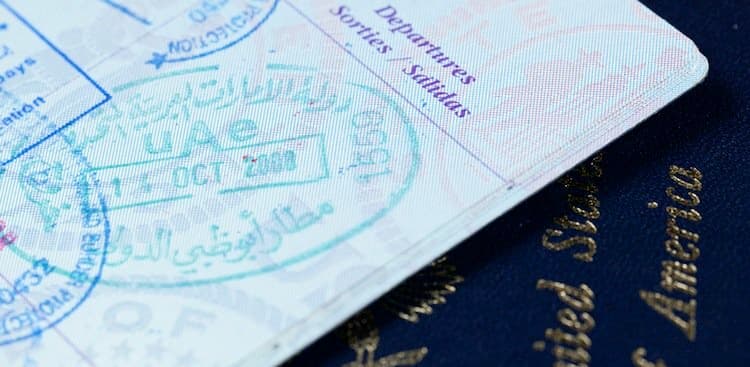“You’re going where?” “Why?” “Isn’t that place dangerous?”
These are questions I often get when I’m leaving for an international assignment in remote or volatile regions of Mexico or South Asia, or formerly closed off countries like Burma. In my career, I’ve had to travel to many destinations deemed “dangerous,” and even found myself in tricky situations, including revolutions and civil unrest.
And, I’ve lived to tell the tales. I’ve also learned that, just because a place is hyped as “dangerous” doesn’t mean you have to completely avoid it. In fact, some of the world’s top execs have to travel to high-risk zones to develop and manage projects and staff—and it contributes to their success. Rather, you just need to be aware of what you’re going into, and know how to prepare.
Gain Perspective
Before you go, do some research to get insight into your destination’s social and political landscape. First, scope out the U.S. State Department website for travel advisories and check in with your company’s risk-assessment department (though know that it may err toward overstating the dangers).
Then, read the local papers, and talk with colleagues who work there or who’ve been there. Ask thoughtful (read: not paranoid) questions to find out what the risks in the area really are. Is it pickpocketing that’s a problem (which, I might add, is always to be expected in tourist areas)? Or is it more serious violence or war? Are there particular groups that are targeted?
Also remember not to generalize—even if there’s turbulence in one city, daily life in the rest of the country may be continuing as usual. And, just because another traveler had a poor experience, doesn’t mean you’ll face the same thing. Mexico, for example, continually makes headlines for both petty crime and drug cartel-related violence, and while some tourists have sworn off visits to the country, many go every day without incident.
Have a Plan, Leave a Trail
That said, there are a few key things you’ll want to do before traveling to a high-risk destination. First, make sure to notify your embassy at least two weeks ahead of your trip. Then, make color copies of your passport—a lost passport can mean a very difficult departure in case of emergency. Keep one copy with you, leave one at home, and swap another copy (or two) with any colleagues joining you on the trip. Also remember to keep copies separate from your passport itself. They won’t do you any good if they’re together when they’re lost or stolen.
Then, make sure someone back home has your itinerary. This can be as easy as updating your Facebook status to let your friends and family know where you’re headed, or jotting down your destination and departure time in a shared Google doc so others know when to expect to hear from you.
Developing a simple plan with your traveling partners can also minimize risk. Before you go, have a meeting to discuss the trip’s details, any key concerns, and your worst-case scenario plans. In addition, you should always have on hand the numbers of your travel partners, your embassy, and a trusted local guide or driver just in case you need to leave quickly.
An Extra Layer of Defense
Many risky situations can be prevented; however, if you are going to a place that is in conflict, you might consider taking hostile environment security training, especially if you plan to work as a consultant, NGO worker, or even as a mere assistant on the ground for the long haul. Some programs, like the training from AKE, take a military security perspective, while others, like Global Journalist Security, focus on the needs of human rights defenders and journalists (like how to avoid sexual assault or secure digital information). You (or your your company, if you’re traveling for work) can decide which one is best for you. I also recommend reading through the Committee to Protect Journalists’ Guide to Security.
In these higher risk areas, make sure you or your company has war and terrorism or evacuation insurance in case you need to get out of the country.
Knowledge and Confidence (Not Fear) Are Key
After the 2011 bombing in Bombay, I went to visit an old friend near where the attacks took place. When I asked her if she was frightened, she said, “We don’t have time to be afraid.”
And she’s right, in that living in fear wastes precious time and productivity. In many parts of the world, these types of incidents are part of daily life, and most often, normal life finds a way to go on.
Yes, when you're in a new place, you should remain alert to your surroundings, and you should take any precautions recommended for your destination, but if you’ve done those things, don’t be scared. Also remember that the way you carry yourself in any destination makes a huge difference. Don’t just look like you know what you’re doing, make sure you know what you are doing. Use what you learned in your prior research as you navigate directions, dressing style, and other customs. Try to blend in to an extent by taking cues from locals and other travelers.
Assess the Risk, Consider the Opportunity
Just because a place has been labeled as “dangerous” doesn’t deter investors, businesses, and job seekers from setting up shop there, and it doesn’t have to deter you, either. But in your career and in your personal life, you will have to decide what you’re comfortable with.
While I’d generally go anywhere, there are a few countries (Somalia, Afghanistan) I would consider carefully because of war, oppressive governments, and their treatment of women. But I’ve spent time in other supposedly dangerous places like Ciudad Juarez, Mexico and war-torn parts of Burma—and wouldn’t be the same person without those experiences.
On the whole, the world is getting safer, and levels of conflict are lower than ever before. Yes, there is a potential risk in everything we do, but if we avoid traveling out of fear, we limit ourselves entirely. Being prepared and understanding a conflict zone can be a huge asset to your career and travels.

